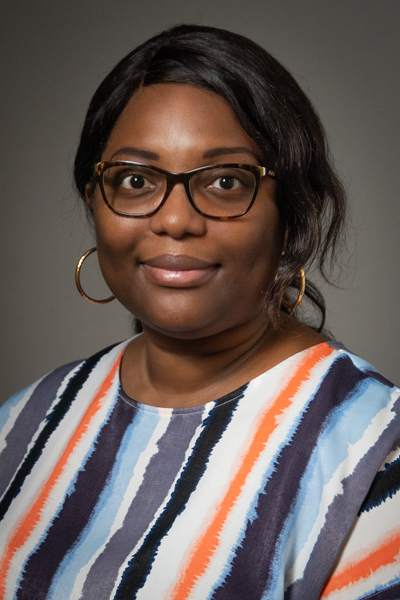Ugochi Ogu, MD, an assistant professor in the Division of Hematology and Oncology at the University of Tennessee Health Science Center, and her team have discovered a novel variant of sickle cell disease.

Sickle cell disease is an inherited blood disorder that results in the production of abnormal hemoglobin in the blood. Two abnormal copies of the gene, one from each parent, are required to manifest the disease, and the nature of the combination determines the severity of the disease—ranging from mild/benign to life-threatening.
After one of her patients had a positive sickle cell screening, Dr. Ogu performed hemoglobin electrophoresis, which revealed approximately 40% of the sickle hemoglobin (Hb S) and approximately 50% of an unknown hemoglobin variant. Genetic sequencing then allowed the team to determine that this unknown variant was the highly uncommon hemoglobin (Hb) Haringey, and to confirm the patient had a novel variant of sickle cell disease composed of hemoglobin (Hb) S and Hb Haringey, called Hb S/Haringey.
Her report about this novel variant, “First Report of Compound Heterozygosity for Hb S (HBB: c. 20A> T) and Hb Haringey (HBB: c. 131A> G)”, is available in the academic journal, Hemoglobin.
Dr. Ogu, the medical director of the Diggs-Kraus Comprehensive Sickle Cell Center at Regional One Health, is a board certified, specialty trained pediatric hematologist-oncologist, whose clinical interests are sickle cell disease and the transition of care from pediatric to adult medicine. Previously, she was the assistant director of the Sickle Cell Center for Adults at the Montefiore Medical Center/Albert Einstein College of Medicine. Her positions have provided her extensive experience in pediatrics and adult medicine, and she considers herself a lifespan sickle cell disease physician.
According to Dr. Ogu, Hb Haringey has been documented only twice, once in a research article and once in a registry. Although her sample size is currently one, and the patient has moved to a different country, Dr. Ogu’s data suggest that Hb S/Haringey is likely a mild, if not benign, form of sickle cell disease. She and her team believe this is caused by the blood’s potentially increased affinity for oxygen created by the novel variant.
She emphasized the importance of sickle screen-positive patients with ambiguous hemoglobin electrophoresis results visiting hematologists for genetic sequencing, when possible, to investigate and confirm any abnormal variants found in their screens. In this way, the sample size will grow and health care professionals can learn more about novel variants.
“There were only two places I could find Hb Haringey. So, of course I wanted to find out more about what this means, this hemoglobin that literally nothing is written about,” Dr. Ogu said. “I had to track down the person who uploaded it to the registry to get information about the context in which it was encountered. Ideally, we would have loved to test the new patient’s parents and perform further laboratory testing with fresh blood specimens. That would have given us more information as to how severe this might be. We only have a sample size of one, so we can’t say too much, but from what we see, it may be one of the most benign forms of sickle cell disease.”
